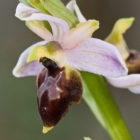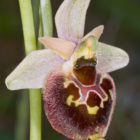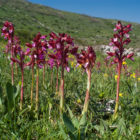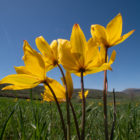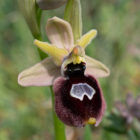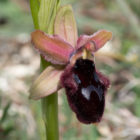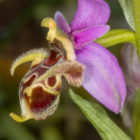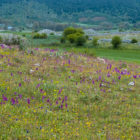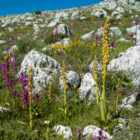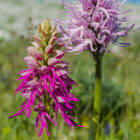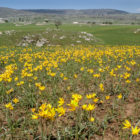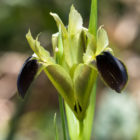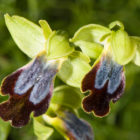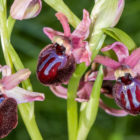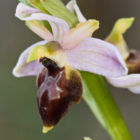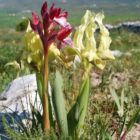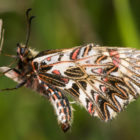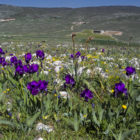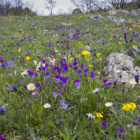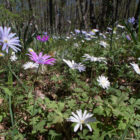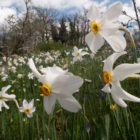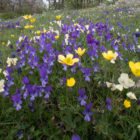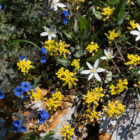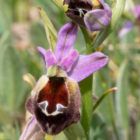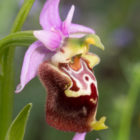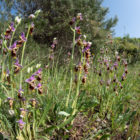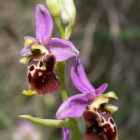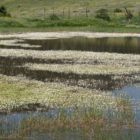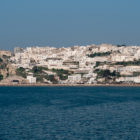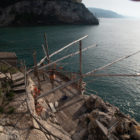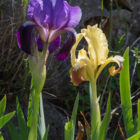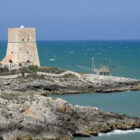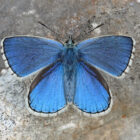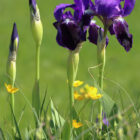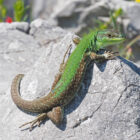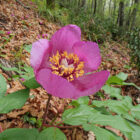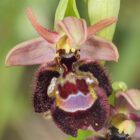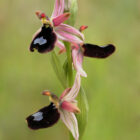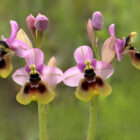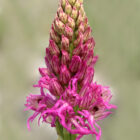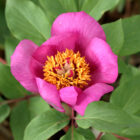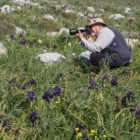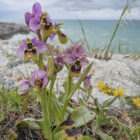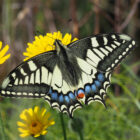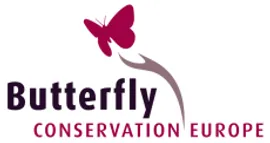Dates & Prices |
BOOK NOW |
Dates: 15th – 22nd April 2026
Price: £1,795 places available
Single Room Supplement: £175
Deposit: £150 per person
Price Includes: All meals, accommodation with private facilities, ground transport, services of guides, holiday report
Not Included: Flights, travel insurance, drinks and any other personal items.
Leader: Paul Harcourt Davies & Lois Ferguson
Group Size: Minimum of 4 and a maximum of 7 guests plus 2 leaders.
Grade: Gentle paced walks in a variety of terrains. Ideally suited to photography.
Holiday Highlights
- Exclusive high quality tour with a very small group specifically designed to increase each participants enjoyment of the holiday and to minimise the impact on the local sensitive environments where we visit
- Gentle paced week of botany in Europe’s finest natural rock garden
- Led by an elite team of Paul Harcourt Davies and Lois Ferguson, residents in Italy & visitors to the Gargano for 30+ years
- Explore all the best well known sites plus some special secret spots
- 2 centre tour staying in good hotels and pleasant & interesting locations
- Short drives (plus walks from one of the hotels) for maximum time in the field
- Several spring butterflies possible including Southern Festoon, Cleopatra and Provence orange tip
Indulge in the botanical treasures of Europe’s finest natural rock garden with Paul Harcourt Davies on our first class tour of the Gargano peninusla in Italy!
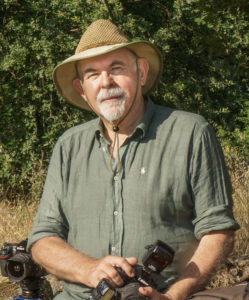
Paul Harcourt Davies is a professional photographer/author and conservationist with an international reputation gained through his images, his numerous books (19 to date), articles and lectures. He has led botanical, natural history and photographic trips for three decades and has lectured in the UK, USA, Cyprus (where he lived from 1978-81) and Italy on various aspects of photography and natural history, taught hundreds of workshops and is a prolific writer.
He is regarded as an authority on the Mediterranean flora and fauna (orchids in particular) and has been involved in numerous conservation projects. He was a founder member of the Hardy Orchid society, served as its chairman and is now an honorary Vice President: he was also chairman of Butterfly Conservation, S Wales. Paul has lived in Italy since 2003, where he is involved with numerous projects locally and nationally.
Click here for a taste of… Gargano – An Orchid Paradise For the lover of wildflowers, wild orchids in particular, few localities can even begin to rival the Gargano peninsula in Puglia, southern Italy, both for the variety of species and their profusion. Gargano was once an island separated from the Italian mainland by the Adriatic sea. It moved on its tectonic plate and the channel with the mainland gradually silted up to form the fertile plain of Foggia and now sticks out as the spur on the heel of Italy’s boot. Away from the coast the land rises to Monte Calvo at 1,065 m (3,494 ft). Most of the upland area, about 1,200 km2 (460 sq mi), is part of the Gargano National Park and the change in altitude between the base and heights means that plants at high level flower some three to four weeks after the same species at the coast There is a wonderful central forest with huge ancient beech trees (Foresta Umbra), where, in spring, there is an under-story of blue anemones (Anemone blanda) white narcissus (Narcissus poeticus), yellow orchids (Dactylorhiza romana) and occasional peonies (Peonia mascula)…and many others. The rich orchid flora numbers several endemic (or near endemics)…Ophrys sipontensis, O. archipelago, O. promontori and O biscutella. The total number of species is open to dispute and depends whether you are a ‘splitter or lumper’… what is fascinating is that hybrids, particularly of the genus Ophrys are more frequent than in most other places for the tiny pollinating bees are not as faithful here and are not restricted to a single Ophrys species. Orchids are a special feature but there are wonderful displays to delight the eye (and the camera) …yellow tulips (Tulipa australis) veritable acres of two species of irises (dwarf Iris pseudopumila – predominantly pale yellow) and the endemic Iris biflora mainly deep blue/purple but also in cream and yellow) Then there are and peonies (Peonia mascula) in the beechwood, narcissus anemones and a plethora of other colourful wild species. The whereabouts of many of the best plant locations often elude the casual visitor but they can be discovered by wandering away from the beaten track through the stone-strewn areas. The introduction to the natural history of southern Italy begins as we make our way up the coast from Bari airport stopping at the vast area of salt pans near St Margherita di Savoia (where there are flamingos, black-winged stilts, bittern and nesting storks as well as a variety of raptors including hen harrier…). Depending on the arrival of spring butterflies on the wing include southern festoon, cleopatra and Provence orange tip. And we do not forget the rich history and culture of this region for Paul HD and Lois ferguson are Italophiles who know this area and its natural and human history. We stay in two centres, one in Monte St Angelo to give easy access to the heights and allow us to wander from our hotel, the other, by the sea, in the small town of Peschici: both towns have medieval town centres with lanes, nooks and crannies.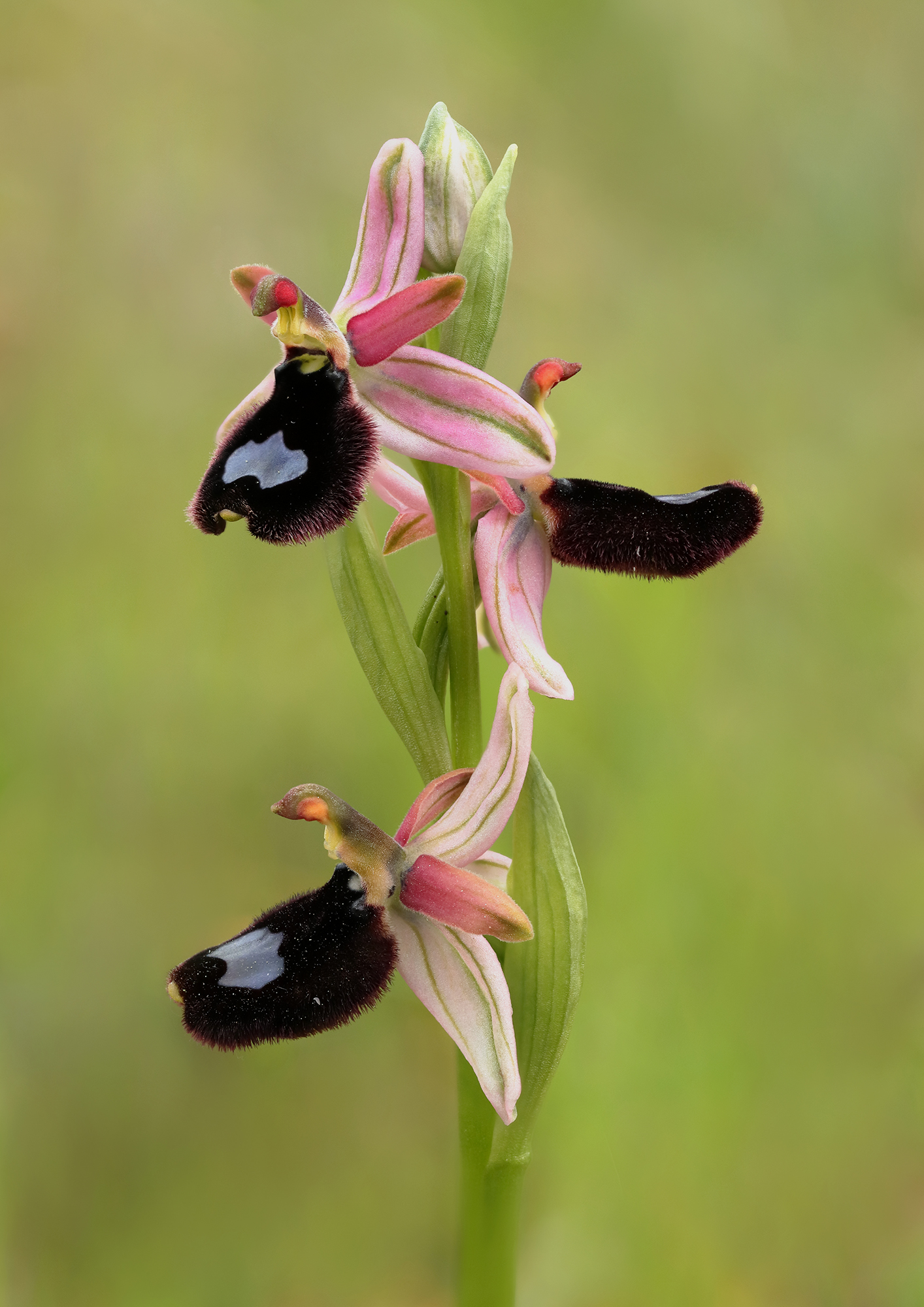
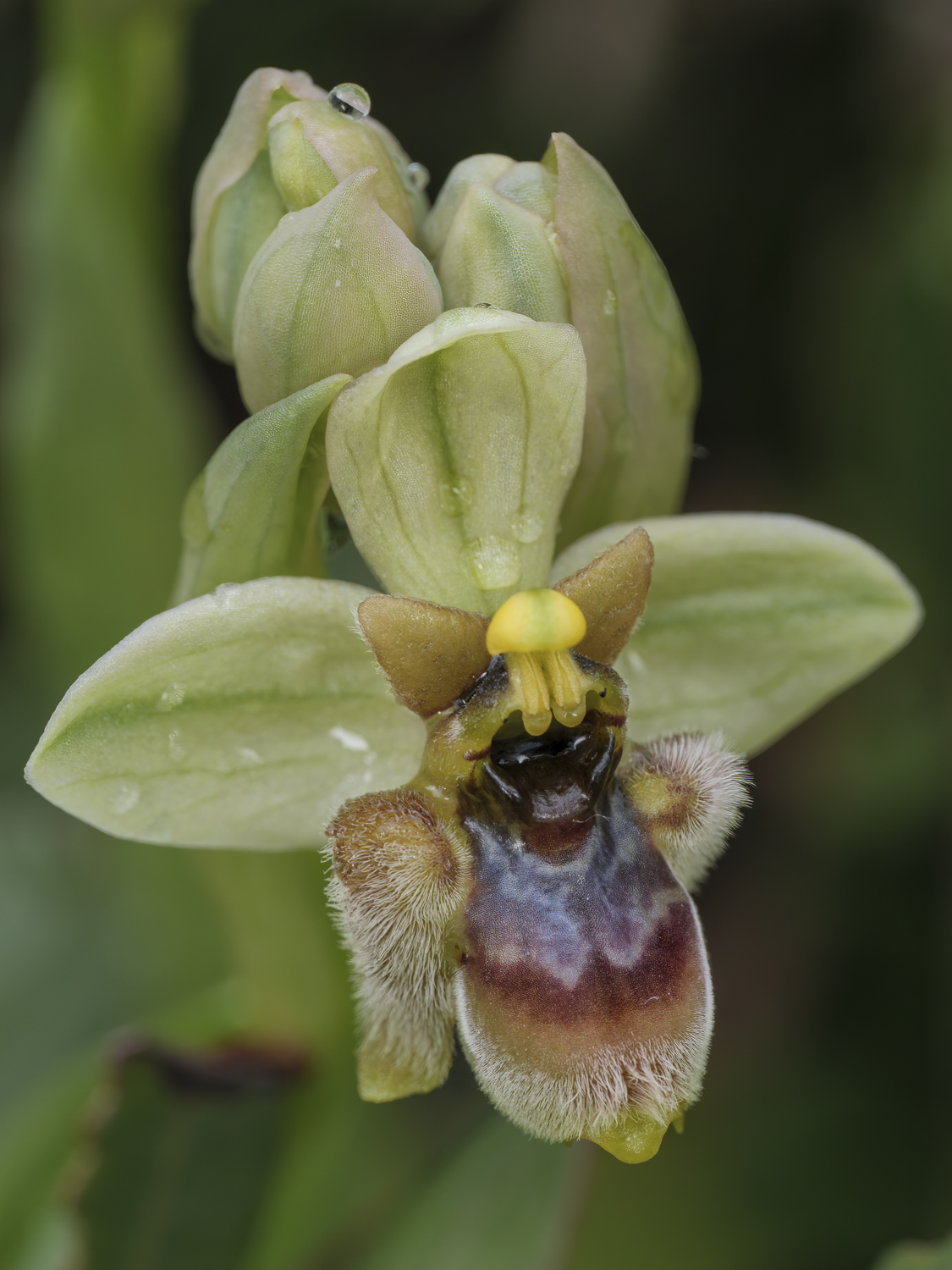
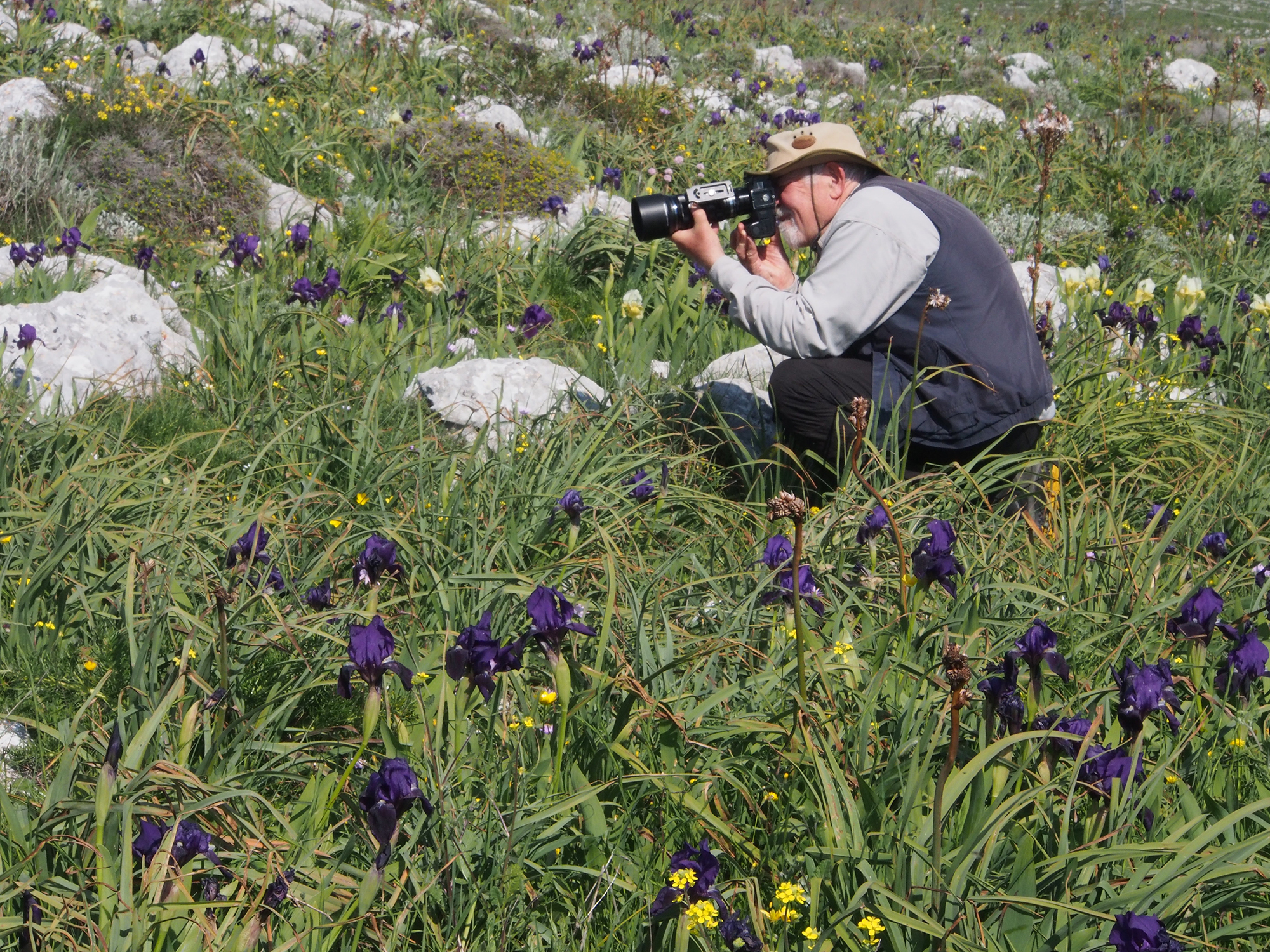
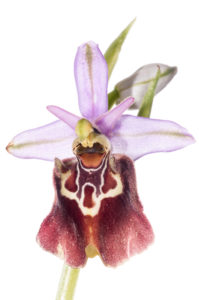
Day 1: Travel from Bari Airport to Monte Sant Angelo, stopping at the vast area of salt pans near Santa Margherita di Savoia, where there are flamingoes, black-winged stilts, bittern and nesting storks as well as a variety of raptors depending on the migration season including osprey and hen harrier…).
Day 2: A short drive to mountains near San Giovanni Rotondo (far from pilgrims to the shrine of Padre Pio), brings us to astonishing flower displays in an open scrub of dwarf oak where blue and magenta anemones flower with buttercups, daisies, and yellow Roman orchids.
Day 3:Southern slopes of the Gargano: with a lane walk for tulips orchids and irises. Several other rich south-facing sites will be examined and we shall find the stunning Ophrys sipontensis among many other species. Return via Tomarola and short walk down into an impressive gorge towards Santa Maria di Pulsano (interesting rupestrine endemics and blue rock thrush…)
Day 4: Early visit to the church of the Archangel Michael in Monte San’ Angelo and its subterranean cave, which has made the town a place of pilgrimage. Amble along the ridge near the town where orchids grow in abundance and we picnic amongst them. We shall find Ophrys promontori, Ophrys bertoloniformis and the last of the endemics: O. biscutella. Here the flowering is some three weeks later than the coast.
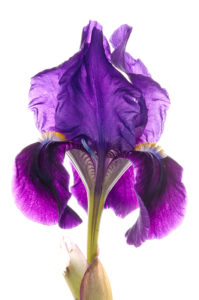 Day 5:We transfer to the seaside fishing village of Peschici, where we spend the next three nights in the Hotel Elisa (where Paul first stayed some 40 years ago). We travel through the hills and explore the beechwoods of the Foresta Umbra with their acres of white narcissus and pale blue Anemone apennina and magenta Anemone pavonina.
Day 5:We transfer to the seaside fishing village of Peschici, where we spend the next three nights in the Hotel Elisa (where Paul first stayed some 40 years ago). We travel through the hills and explore the beechwoods of the Foresta Umbra with their acres of white narcissus and pale blue Anemone apennina and magenta Anemone pavonina.
Day 6:Travel west of Peschici: look for Ophrys cornuta nr the coast and further along find some of the later orchids including some three species of tongue orchids (Serapias). We then explore the comparatively lush slopes near the Lago di Varano for Ophrys archipelagi and O. parvimaculata as well as iris, cyclamen and peonies. If the flamingoes are still round we could visit Laguna di Lesina… and call in Bosco Spina as we make our way back.
Day 7: Travel to Vieste then proceed on road toward Mattinata and a hidden plateau beneath Monte Sacro where we have seen storks, pallid harrier and golden oriole…as well as numerous orchids.
Day 8: We travel to Bari and the flights home.
Note: This itinerary is a guide …we reserve the right to change the order of days (when there are national holidays) and to maximise what you will see because one season can change from the next and we shall visit several days before to make sure what flowers where.
Elizabeth & Peter H, 2024: Paul and Lois made an excellent team, they were very welcoming, helpful and knowledgeable. Paul was an enthusiastic communicator for those of us with limited knowledge of the ophrys species. Lois provided lunches of exceptional quality and variety served in idyllic settings. She is an excellent driver. Paul led us on numerous varied walks finding many different orchid species beside many other botanical treasures. All an all a truly rewarding experience
Launcelot H, 2024: I really enjoyed the holiday, having never been on an organised nature trip of this kind before. The group was very congenial, and it was an added bonus to discover that Paul and I had overlapped as undergraduates at the same Oxford college in 1970! He and Lois made an ideal leadership team, with their complementary skills and expertise, and everything ran very smoothly.
Allan F, 2024: I enjoyed the trip immensely, the abundance of spring flowers and orchids was quite breathtaking and Paul was the perfect guide to help us find and appreciate the different species present. And full marks to Lois for her excellent driving skills and for preparing the most delicious lunches for us every day (but then she is a Ferguson!).
Paul C, 2024: I had never previously been on a tour with either yourselves or any other organisation, and it was excellent. Paul was a wonderful leader, and Lois’ lunches were amazing!
Diane G, 2023: A wonderful chance to experience the different floral habitats of the Gargano, enhanced by the expansive knowledge of the experienced guides Paul and Lois.
David R, 2023: This was the third occasion on which I have enjoyed an orchid oriented excursion led by Paul . They are simply the best tour leaders that one could wish for. Paul is immensely knowledgeable when it comes to the taxonomy of orchids and their biology as well as being a first class guide to the best viewing niches. Lois is excellent in her ability to care for the everyday needs of the group. They are both extremely effective as group leaders-always good humoured and sensitive to the interests of the group-some members of which might be rather elderly!..One could not wish for better!
Bob Male, 2022: A delightful week in what is truly an orchid paradise. It’s hard to imagine better leaders that Paul and Lois – they did us proud, finding great places to show us the outstanding flora and some of the history and culture of the place as well. Paul’s knowledge of the flora and ecology is amazing and Louis’s picnics are a joy. Comfortable hotels and good food together with some lovely weather made this a week to remember.
Kate S, April 2019:
Really great week. Lois’ lunches were fabulous. She was also an excellent calm and welcoming presence at the hotels and made sure every detail was right. Paul and Yiannis were incredibly patient with the group and always very courteous, even if one asked a dim question! I have started saving for my next Greenwings holiday!!


